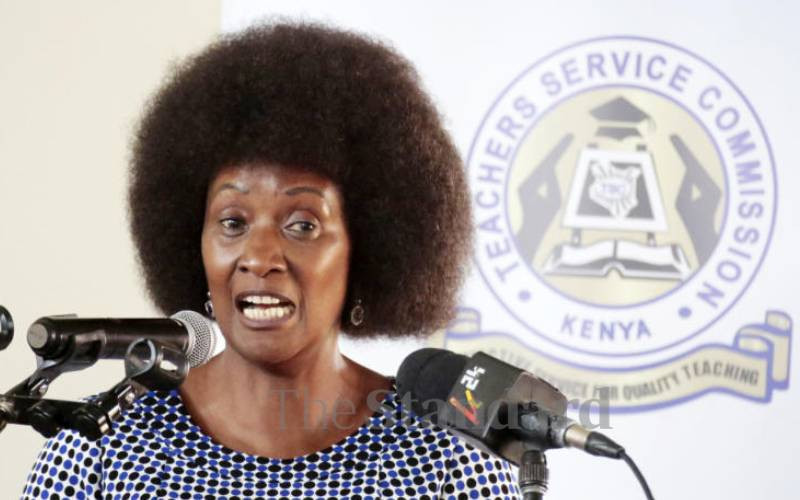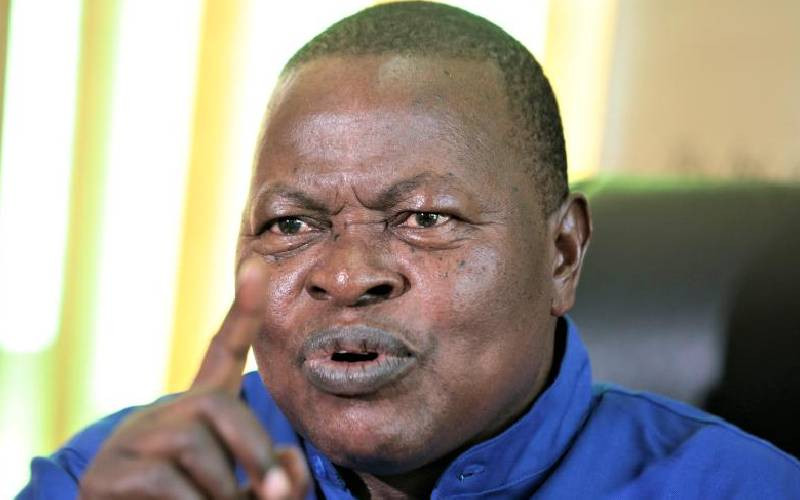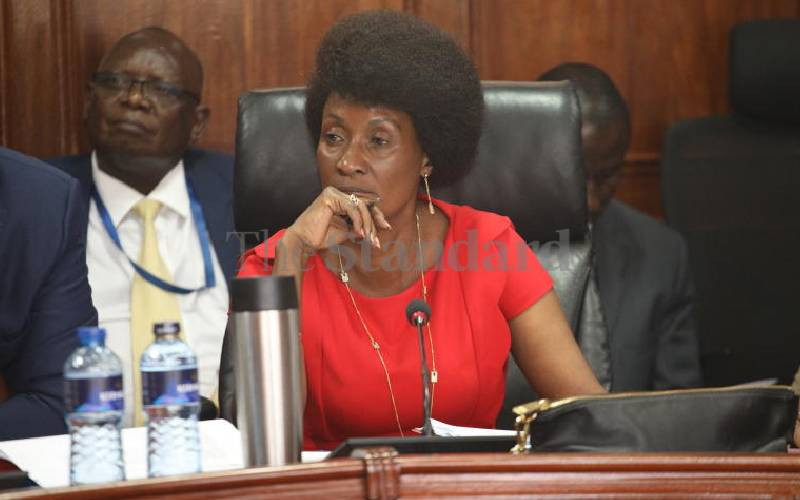Education Cabinet Secretary Fred Matiang’i touched a taboo subject while releasing the 2015 KCPE examination results: Teacher absenteeism.
This followed revelations that while the mean score among private school candidates improved slightly from 229.94 in 2014 to 230.14 in 2015, that of candidates in public schools went down from a mean score of 187.58 in 2014 to 180.87 in 2015.
While the spotlight on absenteeism took most teachers by surprise, it was perhaps one of the most poignant highlights of the release of the 2015 KCPE examination results.
The classroom is where children spend most their time in school. This is where the curriculum is imparted to the learners. This is where most teaching and learning take place.
And since teachers are the most important school-based determinant of students’ academic success, their absence raises important issues about whether the curriculum is being delivered to meet the fundamental objectives and goals of education.
No matter how engaging or talented teachers may be, they can only have an impact on student learning if they are in the classroom. Put simply, teachers’ absence in class for any length of time, affects students’ academic achievement. It also blights national aspirations that are forged in school and the classroom.
Teacher absenteeism is also important in the sense that the nation commits billions of shillings to education; the money used to pay teachers salaries and put up educational infrastructure such as classrooms, libraries, books, hostels etc. Parents also pay a lot of money to keep their children in school.
financial implications
The Government appreciates the negative effects that teacher absenteeism has on academic achievement and the needless financial implications this have on resource utilisation.
According to a World Bank report titled Service Delivery Indicators Kenya July 2013, 15.5 per cent of teachers in primary schools nationally were absent from school.
This constituted 16.4 per cent of teachers from public primary schools and 13.7 per cent from private primary schools.
The paradox is that while most teachers actually go school, only some actually go to class to teach.
The report notes that during that period, 42.6 per cent of teachers in primary schools nationally were absent from class. Some 47.3 per cent of the teachers were from public primary schools while 30.7 per cent were from private primary schools.
“Comparing absence from school and absence from class, it is obvious that the main leakage in terms of teacher time actually takes place inside the school. While absenteeism from school is 16 per cent, four in 10 teachers are absent from the classroom during the unannounced visit,” report observes adding that a public schoolteacher is 17 percentage points, or one third, more likely to be absent from the classroom than a private school teacher.
The results were based on observations from 2,960 teachers in 306 schools.
Stay informed. Subscribe to our newsletter
Teacher absenteeism has a negative impact on curriculum delivery in general, syllabus coverage, and quality teaching and satisfactory learner achievement.
While we cannot discount other factors behind the dismal performance of public primary schools, teacher absenteeism—from the classroom—contributes significantly to the low performance of public primary schools in national examinations.
The time allocated for teaching and learning demands that teachers and learners are always punctual for the task of teaching and learning. Any loss of time on any day—for whatever reasons— contributes to time gaps which compounds the learning gaps that sustained teacher absence, weak mastery of the subject matter and the methodology occasion.
Given that poor and vulnerable people across the region see education as a pathway out of poverty for their children, any absence of teachers from the classroom should raise legitimate questions; questions similar to the ones Education Secretary raised during the release of KCPE 2015 results.
This is because teacher absence negates the gains the Government has made in improving access to quality education by all children.
 The Standard Group Plc is a
multi-media organization with investments in media platforms spanning newspaper
print operations, television, radio broadcasting, digital and online services. The
Standard Group is recognized as a leading multi-media house in Kenya with a key
influence in matters of national and international interest.
The Standard Group Plc is a
multi-media organization with investments in media platforms spanning newspaper
print operations, television, radio broadcasting, digital and online services. The
Standard Group is recognized as a leading multi-media house in Kenya with a key
influence in matters of national and international interest.
 The Standard Group Plc is a
multi-media organization with investments in media platforms spanning newspaper
print operations, television, radio broadcasting, digital and online services. The
Standard Group is recognized as a leading multi-media house in Kenya with a key
influence in matters of national and international interest.
The Standard Group Plc is a
multi-media organization with investments in media platforms spanning newspaper
print operations, television, radio broadcasting, digital and online services. The
Standard Group is recognized as a leading multi-media house in Kenya with a key
influence in matters of national and international interest.









